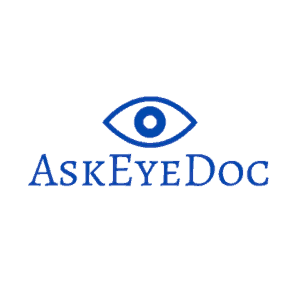OTC Readers based on Age and viewing distance
| Age | Power for book/phone | Power for desktop computer |
| 40-44 | +0.75 to +1.25 | +0.50 to +1.00 |
| 45-49 | +1.00 to +1.50 | +0.75 to +1.25 |
| 50-54 | +1.50 to +2.00 | +1.25 to +1.75 |
| 55-59 | +2.00 to +2.50 | +1.50 to +2.00 |
| 60 and over | +2.25 to +2.75 | +1.75 to +2.00 |
This chart is based on the power need for someone who does not have any need for glasses at a distance.
The power of readers is based on age, the distance the reading material is from the eyes and the need for glasses at a distance.
Someone who is nearsighted is able to see better up close than far away; this means that the power for reading would be less than someone who is not nearsighted.
Now keep in mind it is pretty rare to have exactly zero power for distance. Most people have some sort of refractive error (click here to learn about refractive error) for distance.
If you are nearsighted then you will not need as much power in readers to see up close. If you are farsighted your need for readers and the power will be greater.
It is all about math.
If someone has perfect 20/20 without the need for glasses with zero refractive error at a distance they are called an emmetrope. In this case when that person loses the ability to focus (presbyopia) then they will need reading glasses to see near objects.
Presbyopia means loss of focus or accommodation. The lens in our eye adjusts our focal point by accommodating or changing shape to move the light onto the retina when we look up close. As we advance in age the lens becomes thicker and more difficult to accommodate the light. This causes us to lose the ability to focus on near objects.
Now, a near-sighted eye will see up close better without glasses, but for everyone else, the need for reading glasses will become a progressive need.
One of my patients explained presbyopia as “after 40 vision”. I thought that was a cute way of saying it, but he is true. Presbyopia does usually start in our 40’s and progresses until about age 60.
Presbyopia causes us to need reading glasses, that is unless you are near-sighted and just remove your glasses to see up close. But for someone who is perfectly corrected to see clearly at a distance, when they become presbyopic the need for reading glasses will progressively increase with time until about age 60 at which point it doesn’t tend to get worse.
After the age of 60, it is more common to start seeing the development of cataracts that can affect the vision causing glare and halos at night and the need for more light especially when reading. Cataract development will progress until eventually cataract surgery is needed (review my post on cataracts for more information).
Glasses for Presbyopia would have an ADD power which is an additional reading power that is added to the power of the lens needed to see at distance.
To calculate the power needed to read, you need to know the distance power of the eye. For instance if someone needs +2.00 to read up close and +0.50 to see far away then the total reading power would be +2.00 +0.50 = +2.50.
If someone has a distance glasses prescription of -0.50 then the total reading power for someone needing +2.00 would be +2.00-0.50= +1.50.
This gets even more complicated when you add in astigmatism. Astigmatism cannot be corrected with OTC (over-the-counter) readers.
The equation to calculate lens power in OTC Readers
The power is measured in Diopters which is calculated by the following equation:
Diopter=100/Focal point (cm)
The focal point is the distance from which the object is from the eye.
To measure the focal point measure from where your glasses would sit on your face to the object that you would like to see.
Most people hold their phone or book between 16-18 inches or 40.64-47.72 cm.
Most people sit 22-26 inches or 55.88-66.04 cm from their computer screen.
So if you want to look at something 16 inches or 40.64cm away the calculation would be 100/40.64=2.46 Diopters. Which would be closest to a +2.50 reader.
What is Pupilary Distance (PD)?
Pupilary distance is the distance between our eyes measured in milimeters (mm). This is important to have so that the focal point of the lens in the glasses are positioned over the pupil.
If the focal point of the lens is not centered, it can lead to double vision or eye strain.
PD for reading is usually about 2-4mm less than the distance PD because of eye convergence. When we look up close our eyes converge or turn inward making the distance between the eyes closer.
The closer you hold your reading material the closer together your eyes will be. Thus when viewing a desktop computer your PD will be less than when reading your mobile phone or a book.
This video explains how to use an app for measuring PD.
Android: https://bit.ly/GlassesONforAndroid
iOS: https://bit.ly/GlassesONapp
Why does pd matter?
If the eyes are not looking through the optical centers of each lens it could cause eye strain or in some people even double vision.
When purchasing OTC Readers try to get your eye centered in the frame so that your eye will be as close to the focal point as possible.
OTC readers are a good tool to increase magnification for those of us losing the ability to focus up close, but do know that the higher the power the closer you need to hold your reading material.
As a general rule, age, viewing distance and the power needed to see far away all play a role in what reading power should be used.


